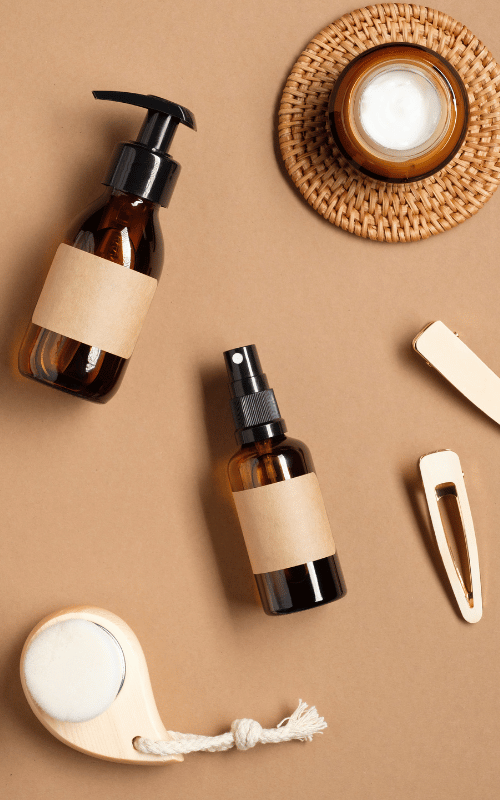Everything You Need To Know About Chemical Exfoliators
Chemical exfoliators – the key to brighter smoother skin
Skin Care | April 9, 2021
This post may contain affiliate links, which means I’ll receive a commission if you purchase through my links, at no extra cost to you. Please read full disclosure for more information.
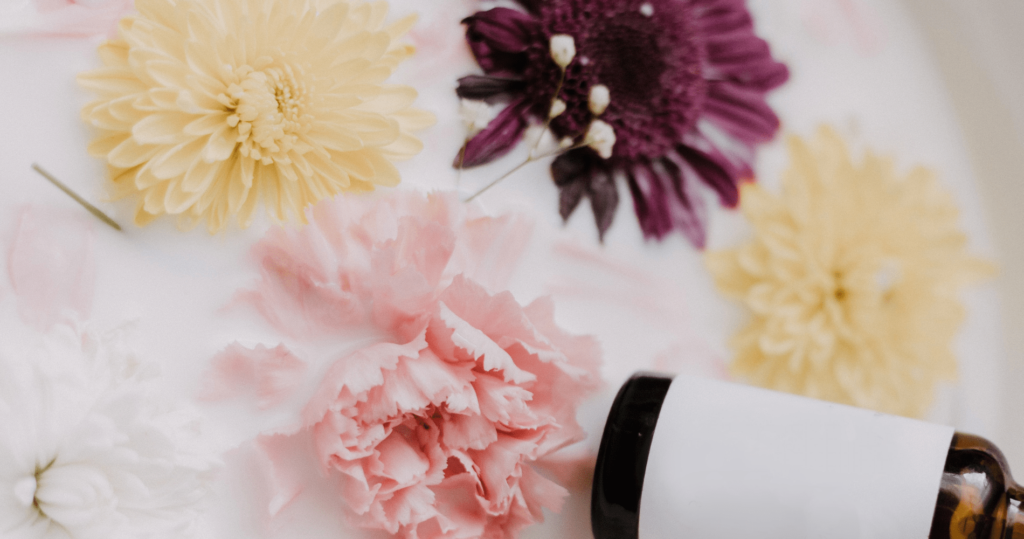
Reaching the goal of having clear, healthy skin can sometimes feel like it’s never going to happen. A feeling I completely understand when it comes to skincare. That is why it is always best to take the time to understand what works for your skin. There are so many different types of products, ingredients, and steps to learn about when it comes to skincare, but for now, let’s focus on mastering chemical exfoliators.
If you have already taken the time to find the correct face wash, then it is time to find the right chemical exfoliator for you. You will need the right chemical exfoliator for your winter skincare routine and your summer skincare routine. Exfoliation is considered a crucial step in skincare, and soon you will understand why.
Table of Contents
- What is a Chemical Exfoliant
- The 3 Main Chemical Exfoliants
- The Right Exfoliant for Your Skin Type
- Finding the Right Chemical Exfoliator to Address Your Skin Issue(s)
- 5 Chemical Products to Try
- How to Use Chemical Exfoliants on the Face
- After Care
- More Information About Chemical Exfoliators
- Signs of Under and Over Exfoliation
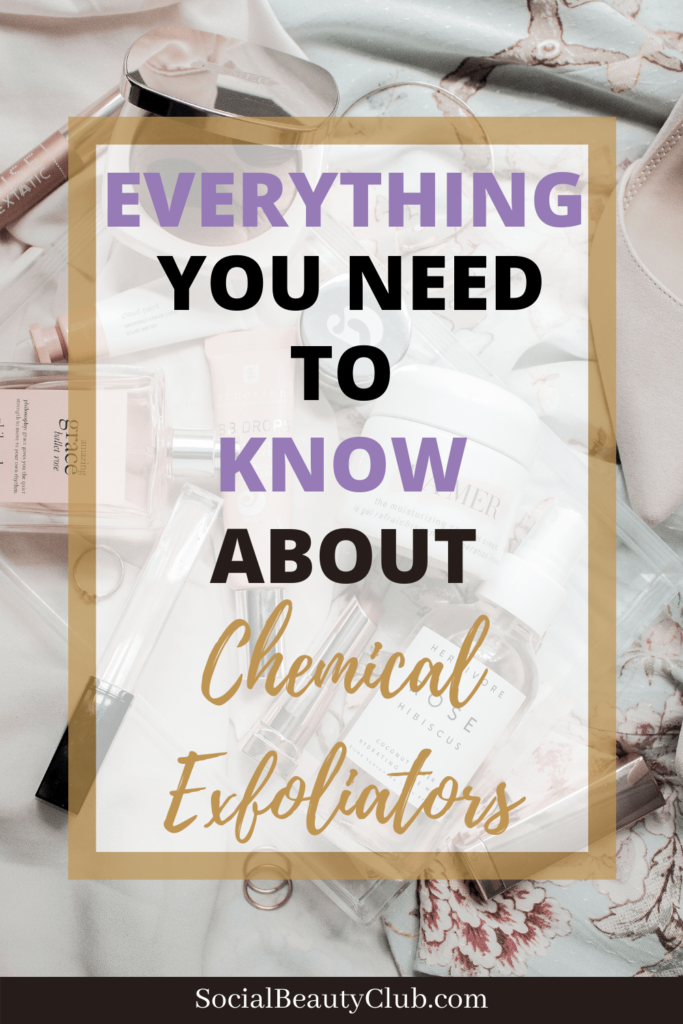
What is a Chemical Exfoliant
First and foremost, let’s start with the basics of what a chemical exfoliant is. They are mainly acids that remove dead skin cells, which your skin needs to remove. Without an exfoliant, your dead skin will build up. Eventually, causing clogged pores, rough texture, dull skin, and more pronounced wrinkles. Your skin needs an exfoliate within your skincare regimen. The main reasons are environmental stressors, skin issues, and age can hinder the natural shedding process of dead skin.
The concentration varies, but the ones you typically buy over the counter have a low concentration. Stronger exfoliants are used for a chemical peel which should be applied by a dermatologist.
Chemical peels can help the skin appear brighter. The reason behind this is because the acids are breaking the bonds which hold the skin together. That is why you see your skin shed after receiving a chemical peel – the top layer of the skin cells is shedding. After regularly receiving chemical peels, your skin tone will become more even, your pores will be unclogged, and your skin will feel smoother. Also, signs of aging could be less noticeable.
Note: The lower the ph level, and the higher the concentration, the more intense the chemical exfoliator will be.
Overall don’t expect to see results overnight when using chemical exfoliants, but consistent use will improve uneven skin tone, enlarged pores, and skin hydration.
The 3 Main Chemical Exfoliants
Alpha hydroxy acids (AHAs)
To describe the different types of chemical exfoliates, we will begin with AHAs, also known as alpha hydroxy acids. The types of acids that fall into the AHA category are glycolic, lactic, citric, tartaric, and malic acid. Adding AHAs to your skincare routine would be great if you are dealing with any issues on the surface of your skin. If you are dealing with skin texture issues such as uneven skin, dull skin, blemishes, lack of collagen due to aging, sun damage, then consider adding an AHA to your routine.
The concentration level you should choose is between 5 to 10 percent to see positive results with your skin.
Beta hydroxy acids (BHAs)
Let’s continue with BHAs also, known as beta hydroxy acids. These acids differ from AHAs because they can penetrate your pores and work on the surface of your skin. Adding BHAs to your skincare routine would be great if you have oily skin or suffer from chronic acne. These acids will unclog your pores and remove acne-causing sebum.
If you are thinking about adding a BHA to your skincare routine, some examples would be salicylic and tropic acid. The concentration you should opt for is between 1 to 9 percent, especially for daily use.
Poly hydroxy acids (PHAs)
Lastly, are PHAs also known as poly hydroxy acids. PHAs cannot deeply penetrate the skin because their molecules are large which causes them to work almost like AHAs. What makes PHAs great is that they can help hydrate the skin, you can gain antioxidant benefits, and they are considered less irritating due to their large molecular size. Some examples of PHAs are gluconolactone and lactobionic acid.
The Right Exfoliant for Your Skin Type
You should already know that you have to pick products that are right for your skin type first, to avoid buying useless products. If you are not sure what your skin type is, you should take the time to find out. You can read about how to find your skin type to help you.
Dry Skin
- Opt for an AHA
- You want an exfoliant that only works on the surface of your skin, such as AHAs
- AHAs will help your skin cling onto moisture
Sensitive Skin
- Using BHAs can soothe and calm your skin
- You can also use PHAs since they are less irritating
- PHAs are helpful when dealing with eczema and rosacea
Oily Skin
- Choosing to use BHAs is the way to go
- Especially, salicylic acid
- BHAs are perfect for clearing pores of all the substances that can lead to breakouts
- Thinner liquid formats are best
- Something to note: using salicylic acid can make your skin feel drier
- To fix that issue, consider combining it with lactic acid
Combination Skin
- Use a serum that contains salicylic acid
- Salicylic acid will give you an anti-inflammatory exfoliating effect
- Opt for something that has a lightweight gel texture and will not clog your pores or dry your skin out
Normal Skin
- You can use AHAs or BHAs
- To help you pick one exfoliator, choose the one that will help you correct any skin issue you are dealing with
Finding the Right Chemical Exfoliator to Address Your Skin Issue(s)
Hyperpigmentation or Scarring
- Use a BHA or an AHA formula with a high concentration level
- You want a chemical exfoliator that encourages skin cell turnover such, as salicylic acid
Mature Skin
- Using AHAs can help diminish the signs of aging
- These acids will target fine lines and deeper wrinkles
- AHAs can also repair any roughness which will leave your skin glowing
Sun Damage
- Opt for AHAs as they can reduce the appearance of sun-damaged skin
- A great combination would be glycolic and lactic acid because they help with natural cell turnover
Ingrown Hairs
- Try using lactic acid and salicylic acid
- These exfoliants will get rid of dead skin, soften your skin texture, and lift the ingrown hairs above the surface

Products to Try
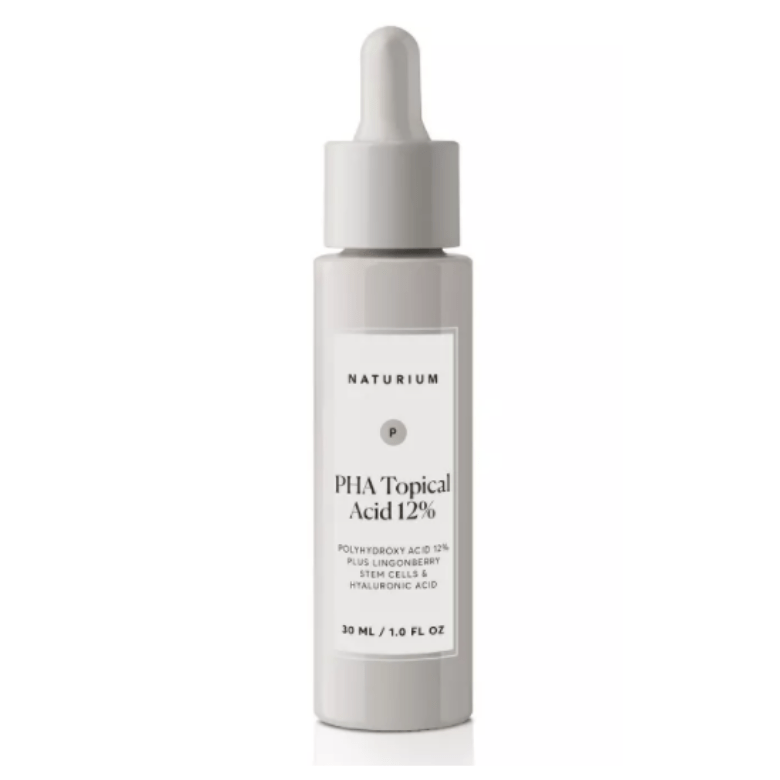
Naturium PHA tropic acid 12%
An exfoliating serum perfect for sensitive and dry skin. The product contains mandelic acid (AHA) and Gluconolactone and Lactobionic Acid (PHAs). Since this topical acid has a 12% PHA concentration, this product is on the stronger side.
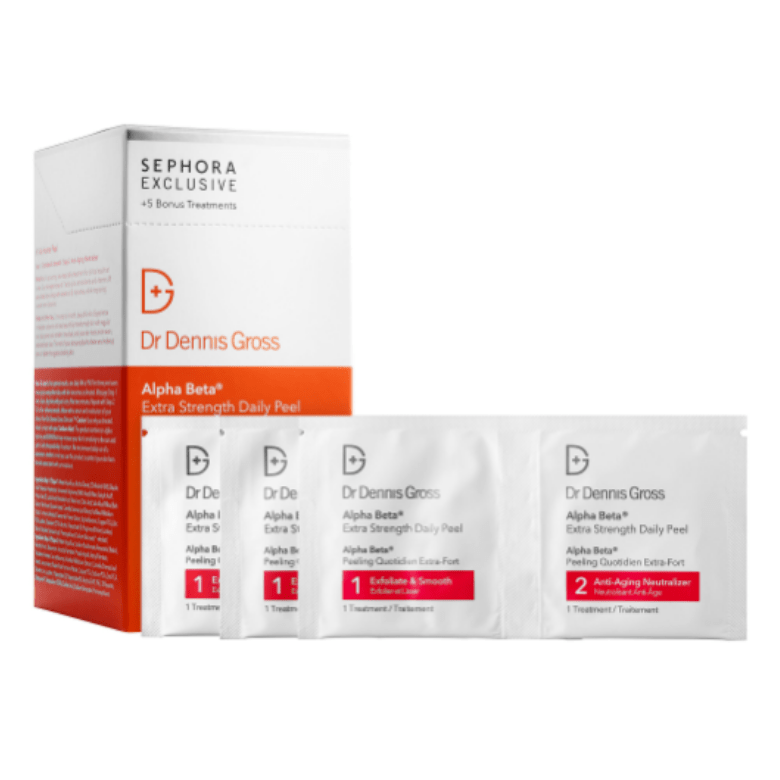
Dr. Dennis Gross Skincare Alpha Beta Extra Strength Daily Peel
These 2 step peel pads contain AHAs and BHAs which will help any skin concerns such as fine lines, wrinkles, dullness, uneven texture, acne, and blemishes. These pads are great for normal, dry, combination, and oily skin type.
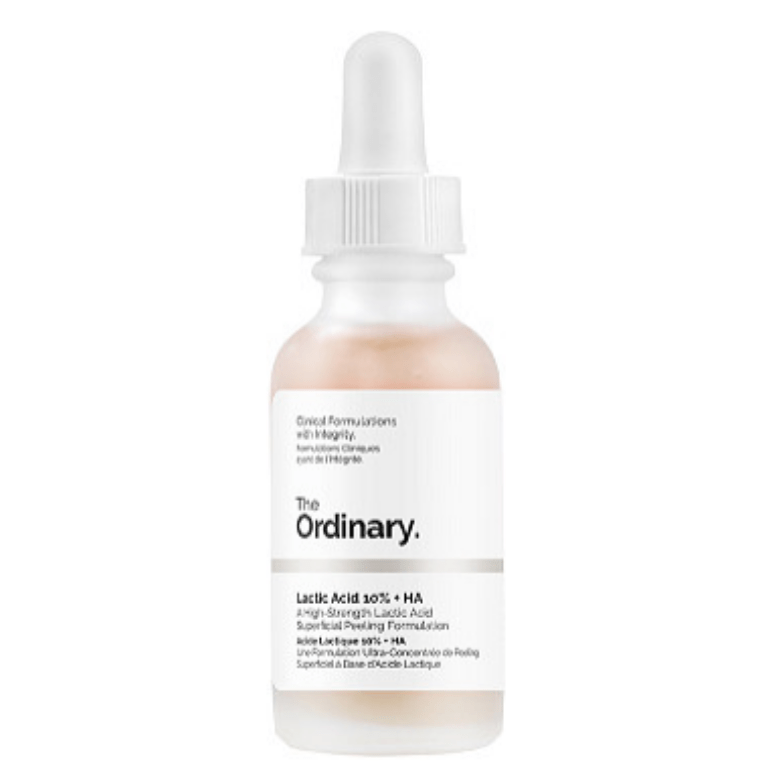
The Ordinary Lactic Acid 10% + HA
If you have dry skin or are dealing with sun damage or ingrown hairs then you should consider this serum. With a 10% concentration you will receive a mild exfoliation.
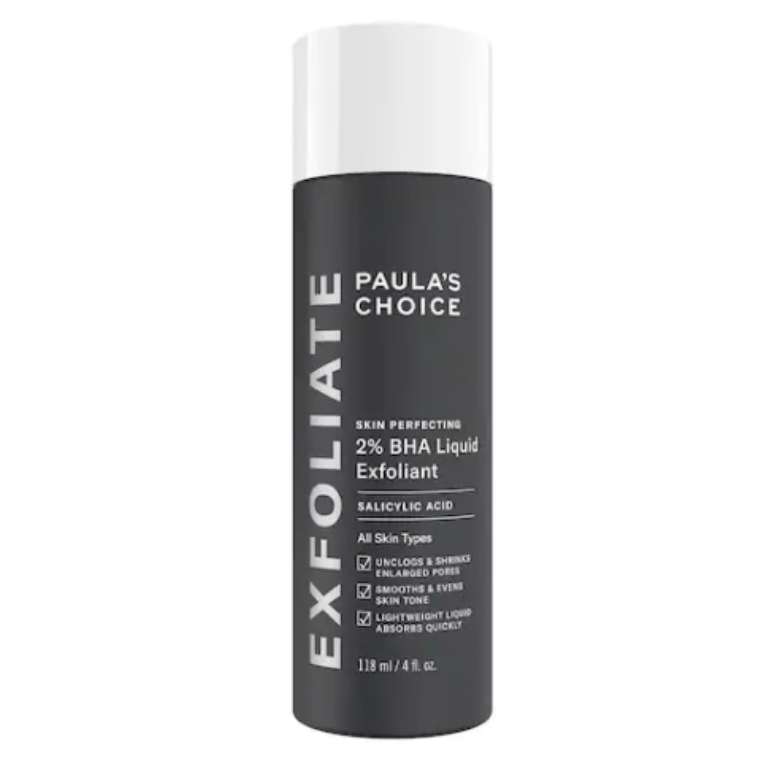
Paula’s Choice Skin Perfecting 2% BHA Exfoliant
A great liquid exfoliant that is best for oily skin. With the active ingredient being salicylic acid, the product will help unclog & diminish enlarged pores and exfoliate dead skin cells.
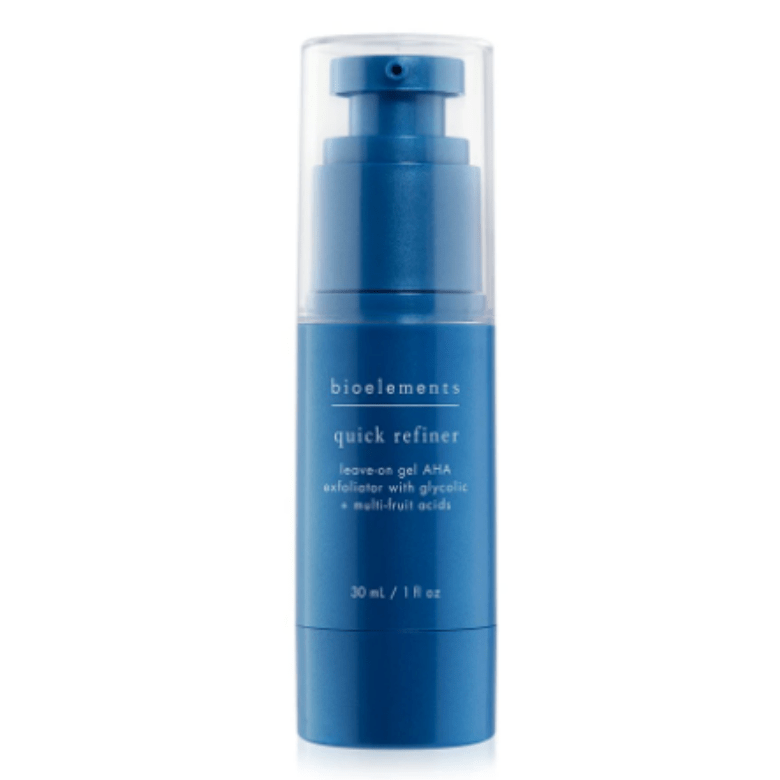
Bioelements Quick Refiner
A gel that contains AHAs and BHAs such as glycolic acid and salicylic acid. This product is for oily skin, combination skin, dry skin, and normal skin.
How to Use Chemical Exfoliants on the Face
When to apply it: After cleansing and toning
Where to apply it: On your face, neck, and chest
How to apply it: If you’re using a liquid chemical exfoliant, you can either apply it with a cotton pad or directly with your hands (pat it in with your fingertips).If it is not a liquid, use your hands.
Note: You can use it around the eye area, up to the orbital bone. Avoid contact with eyelids.
After Care
- Chemical exfoliants can leave your skin feeling dry, so it is crucial to moisturize afterward
- AHAs and BHAs can make your skin more sensitive to the sun, so use sunscreen in the morning
- Try applying your exfoliating acid at night if you’re planning on spending a day in the sun
More Information About Chemical Exfoliators
One acid is usually enough if you have sensitive skin or using retinoids. With that said, you can use more than one exfoliator but only do so if there is a specific issue you are trying to correct. When combining chemical exfoliators, keep these rules in mind:
- Combining PHAs with AHAs or BHAs is fine, but you will lose the benefit of PHAs being more gentle
- You can mix AHAs and BHAs, but stick to a gentler AHA, such as lactic acid
- When mixing acids, use the thinnest texture first, then apply the next one (you do not have to wait for the first one to absorb)
- It is always best to test the combination on a small area of your skin first before going for it all.
- Ease into using chemical exfoliators by trying it once a week and gradually increase from there if needed
When applying your chemical exfoliant, you can do it either in the morning or at night. The night is generally preferred because your skin can become more sensitive to the sun. Applying other products requires no wait time. You should use it twice a day if you are prone to breakouts or dealing with a stubborn skin issue.
Signs of Under and Over Exfoliation
- Under-exfoliation:
- The skin has a rough texture and dull complexion
- Eventually, you begin to feel like your skincare products are no longer working due to a buildup of dead skin
- Over-exfoliation:
- You have irritation, such as inflammation and dryness
- You notice breakouts and peeling
If you notice any of these signs of over-exfoliation, stop exfoliating until your skin has fully healed.
Takeaways
You now know that chemical exfoliators are acids that remove dead skin cells. You understand the importance of removing dead skin. You have an advantage by knowing what AHAs, BHAs, and PHAs are and some examples of those acids. You also know which acids are best for what skin type or skin issue. This advantage will help you make a better decision when it comes to buying one of these products.
As always, show your skin some love and care.

